The Best Nylon / Classical Guitar Strings 2023
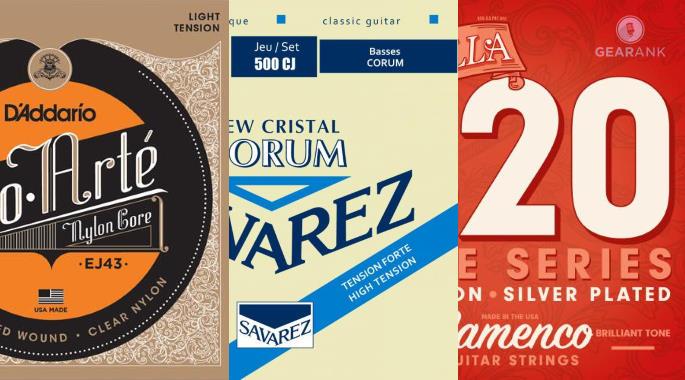
Author & Contributors
Alexander Briones
I have been writing about and researching music gear for many years, all while serving as a music director at my local church. I engage in guitar playing and singer-songwriter stints, in addition to mentoring young musicians and teaching guitar and bass.
Low / Light Tension Classical Guitar Strings
D'Addario Pro-Arte EJ43
Cons
- Lacks percussive attack
- Not as full sounding as I'd like it to be
Pros
- Easy on the fretting hand
- Bright and articulate tone
- Smooth flat semi-polished winding
- Good quality packaging
The D'Addario EJ43 is my go-to light tension set, it provides comfortable playability, without compromising tone and response. It is super comfortable to play, and this really is its best trait. Fretting notes, and bars can be executed in a more relaxed manner, great for students and total beginners.
There's less finger soreness and hand fatigue, which allows for longer and more enjoyable practice. You don't need to use much force to make the string sound good. The downside to its light tension is the tendency to over press the strings, which can cause unwanted intonation issues, fretbuzz and other fret noises. The EJ43 bass strings have flat semi-polished windings, which gives them a smooth feel for finger noise reduction. This also makes changing positions and slide techniques easier to execute. One downside I notice is that there is a tendency for fingers to slip out of position, but this can be addressed by technique adjustments.
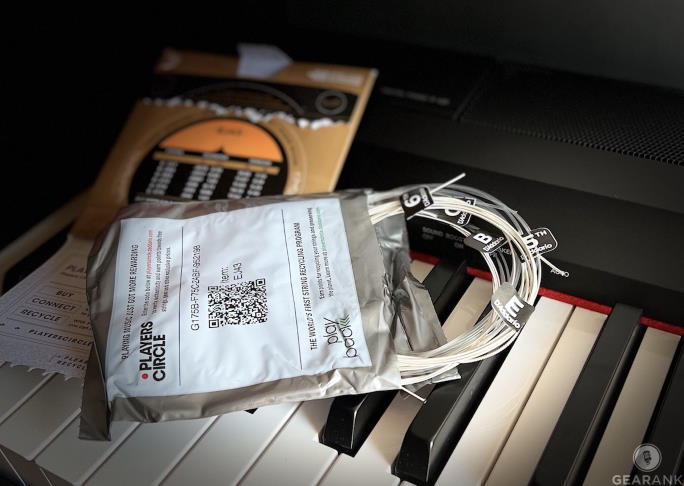
Each string comes with paper labels to ensure proper arrangement on your guitar
As expected from thinner strings, the EJ43 set has a trebly voicing that makes it sound responsive and articulate. Thankfully it's not overly bright, but it's not as full sounding as I would like it to be. Another thing I like about this set is how well it responds to picking hand position changes. As mentioned above, I can get mellower tones by plucking the strings closer to the neck, while moving towards the bridge make it sound brighter.
Light tension sets are known for lacking volume, but I find the EJ43 to be quite loud as it is. My main concern though is the lack of percussiveness when attacking the strings. This can be good or bad, depending on your style of playing.
With its comfortable playing feel, and articulate tone - the D'addario EJ43 set is highly recommended. It has easy playability that even novices can appreciate, while having good enough tone and response that meet the needs of experienced musicians.
Specifications
- Treble Core: Clear Nylon
- Bass Core: Multifilament Nylon
- Winding: Silver Plated Copper
- Treble Gauges: .0275, .0317, .0397
- Bass Gauges: .028, .033, .042
| Website | Source | *Rating Value |
| Gearank | Alexander Briones | 94/100 |
Medium / Normal Tension Classical Guitar Strings
La Bella 820 Elite Flamenco Red Nylon
Cons
- Takes a while to break-in
- Sustain is a bit lacking
Pros
- Budget friendly US made strings
- Good clarity and percussive attack
- Great for Flamenco style
- Ideal for upping clarity of warm sounding guitars
La Bella is known for affordable quality strings that are made in the US. They manufacture strings for a wide variety of instruments, and have a long list of professional musician endorsers under their belt.
Their nylon string line up covers both classical and flamenco. The Elite 820 in particular is tuned to for Flamenco guitars, as such the focus is on emphasizing percussive attack. And that is exactly what you'll get with the 820, it's great at reproducing different levels of attack, which allows for dynamic playing.
For a medium tension set, the La Bella 820 Elite has a bright flavor that suits the Flamenco genre well. This set is really meant to be played near the bridge where it's bright tonality shines better. What impresses me though is how it still has good mids and lows, and doesn't sound thin at all. I noticed that sustain is a bit lacking, but can be extended by adjusting playing technique.
Aside from flamenco, this set is also useful for brightening up dark sounding guitars and provide additional attack. This results in better clarity, without exaggerating the treble frequencies too much. But note that this brightness gradually warms up as the strings age.
Speaking of age, being a non-coated set, this one lasts as much as the average set. And it takes quite a while for it to be properly acclimated after being installed.
If you're looking for a good quality yet affordable set for flamenco, then this is for you. The La Bella Elite 820 Flamenco string set is also good at providing additional snap and attack to naturally warm sounding guitars.
Specifications
- Treble Core: Red Nylon
- Bass Core: Nylon
- Winding: Silver-Plated Copper
- Treble gauges: .029, .034, .041
- Bass gauges: .029, .034, .042
| Website | Source | *Rating Value |
| YouTube | atrafana | 94/100 |
Hard / High Tension Classical Guitar Strings
Savarez Corum New Cristal 500CJ
Cons
- Need to be properly secured to avoid slippage
- Takes a bit longer to break-in
Pros
- Rich sound with plenty of harmonic overtones
- Balanced string to string volume
- Detailed string attack
- Good projection
Gypsy Jazz legend Django Reinhart famously used Savarez strings on his Selmer guitar. Nearly a century later, Savarez is still making quality strings with new developments in technology.
The Savarez Corum New Cristal 500CJ strings are designed as a high tension set with proprietary materials and processes. This set features "Cristal" Nylon trebles and "Corum Polished" silver-wound bass strings.
This set has a rich sound with plenty of harmonic overtones that you normally don't get from light tension nylon strings. Notes sound richer, with good low end depth, without compromising high-end clarity. It also reproduces attack nuances nicely.
Volume projection is good, and it's not just good at being loud, it can produce quieter parts just as well, allowing for dynamic playing. While most high tension strings have some strings that sound louder than the others, the 500CJ has good string to string volume balance.
Despite being high tension, playability is still quite manageable. But the tension difference is more noticeable at the higher frets. One downside of high tension sets is being prone to string slippage due to improper tying of the strings. They also take a bit longer to break in.
This is a great set of strings for the guitarist that want full sounding tone and doesn't mind the extra string resistance.
Specifications
- Treble Core: Cristal Nylon
- Bass Core: Nylon
- Winding: Corum Polished Silver Wound
- Treble gauges: .029, .033, .041
- Bass gauges: .030, .036, .043
| Website | Source | *Rating Value |
| YouTube | Florentine Tise Plus | 93/100 |
Ball-End Classical Guitar Strings
Martin M260 80/20 Bronze
Cons
- Lacks midrange clarity
- Not for purists who prefer tied string ends
Pros
- Clean and articulate highs
- Nice and deep bass
- Convenient installation via ball ends
- Good in-between for those who play acoustic steel and classical guitars
The M260 combines the warm sound of 80/20 bronze wound bass strings with the clean and clear sound of nylon treble strings. The result is a guitar with articulate highs and deep lows.
The treble strings sound and behave as expected with smooth playability and good clarity. The bass strings have a rougher feel compared to the usual smooth silver wound sets. But this feel should be familiar to those who also play steel string acoustics. The bass strings sound nice and deep, but lacks midrange clarity. Being a normal tension set, this set is not harder or easier to play.
Aside from using 80/20 bronze winding, this set also comes with ball-ends, which is again derived from steel strings. The use of ball-end makes this set as easy and convenient to install as steel strings, all while keeping the expected sonic response of a Classical guitar. This also reduces the chance of string slippage issues that are caused by improper tying of the strings. The combination of 80/20 bronze and ball end design makes this a good crossover set for those who play both acoustic steel and classical guitars.
There are purists who point out sonic differences between tied and ball end strings, but in my opinion, the sonic differences have more to do with material used and tension than the ball end. Still, I personally prefer tied end strings, because they look more "proper" and traditional on a classical guitar.
It also helps that this is crafted by Martin, one of the biggest names in the acoustic guitar industry. Given its big brand backing, the Martin M260 deserves a closer look for those who want the sound of bronze wound combined with the convenience of ball-end string design.
Specifications
- Treble Core: Crystal Nylon
- Bass Core: Nylon
- Winding: 80/20 Bronze
- Treble gauges: .028, .032, .040
- Bass gauges: .030, .035, .043
| Website | Source | *Rating Value |
| YouTube | Josh Vanjani | 90/100 |
Ernie Ball 2069 Earthwood 80/20 Bronze
Cons
- Sound gets substantially duller with age
- Not for purists who prefer tied string ends
Pros
- Clear sounding treble strings
- Scooped mid sound with emphasis on clarity
- Convenient installation via ball ends
- Good projection
This is somewhat a surprising entry into this guide because Ernie Ball is more known for electric guitar strings. This certainly establishes their reputation for good sounding and durable strings, and how their high quality standards apply even to nylon string sets.
While silver wound is still the most commonly used, bronze wound sets are getting higher ratings, at least for normal tension sets. Case in point is the continued high ratings that the Ernie Ball 2069 is getting.
This set combines 80/20 bronze wound bass strings with traditional nylon treble strings, resulting in a sort of "scooped" mid type of tone, with the bass having a bit more high end clarity. And given the material used, it has a different feel, having a bit more friction than silver wound sets. The treble strings sound and behave as expected, clean and trebly tone with smooth playability. Strumming the strings together results in good projection that fills the room nicely.
The downside to bright and scooped tone is that the effect of string degradation is more obvious. The set sounds duller seemingly quicker, compared to sets that start out with a warm sound.
Ernie Ball had the balls (pun intended) to equip this set with ball ends, which I think fits well with its non-traditional 80/20 bronze winding. This makes for easier installation, while at the same time put-off those who'd like to stick to old school string designs.
If you're looking for the best ball-end nylon string set, the 2069 is certainly a community favorite. It's tone, feel and convenience earns it a spot in our recommended list.
Specifications
- Treble Core: Nylon
- Bass Core: Nylon
- Winding: 80/20 Bronze
- Treble gauges: .028, .032, .040p
- Bass gauges: .030 .036 .042
| Website | Source | *Rating Value |
| YouTube | Ramzi El Rumbero | 86/100 |
Things to Consider When Buying Nylon Guitar Strings
Every term you’re going to need to know to make an informed purchase is explained below, this way you can be sure you’ve got a good idea of how your strings will perform.
Nylon vs. Classical Strings: Is There a Difference?
Nylon and classical guitar strings are the same. There’s not a type of string which is considered to be the classical guitar string. Rather, players use a variety of different types (we’ll go into these different types in more depth below) based on their preferences and what works well with their instrument.
However, some strings are marketed for flamenco guitar exclusively. Flamenco guitar is characterized by its bright and percussive tone, and strings intended for flamenco are meant to emphasize these elements. These strings may pair well with a darkly voiced instrument, but they’ll offer less of the overtone-ridden and gentle sound that defines the classical guitar. They also tend to sustain less than other nylon strings, making them a good fit for flamenco and some fingerstyle arrangements but a poor fit for a more traditional classical playing style.
With that being said, even flamenco players use a variety of different strings. If you’re looking to play flamenco guitar strings designed for that genre are a good place to start, but they aren’t your only option.
Materials
There are three main types of nylon string: genuine nylon, fluorocarbon (technically not nylon, but deserves to be included due to its popularity) and titanium nylon. To avoid repeating ourselves, we would like to state that the differences inherent to each type of string are going to vary based on your technique, the instrument you use, and the proficiency/intent of the manufacturer. Consider the information below a rough guide as to what you should expect from these strings, not a definitive guide as to how they sound.
Classical Guitar String Tension and Gauge
The playability and tone of steel strings are largely decided by their gauge. Gauge is the thickness of the string, with thicker strings having a higher representation of low to low-mid frequencies and thinner strings having more high-mid and treble frequencies.
Nylon guitar strings are generally divided by tension. Tension is the tension the strings are under, with low tension strings feeling easier to play and high tension strings feeling stiffer. Compared to steel strings, the difference between low and high tension strings isn’t quite as dramatic, but tension has a huge impact on tone. Gauge has the same impact on the tone of nylon strings that it has on steel strings, but the main variable is tension.
Tension influences the following variables: volume, playability, and frequency representation. Low tension strings have the least volume and are easier to play, with high tension having the opposite characteristics. Medium tension strings are a middle-ground between the two. So watch out for tension when Changing Your Strings.
Low tension strings have more “body” and a higher representation of low and low-mid frequencies. Body is the presence of overtones, so a low tension string will generally have a more complex and musical tone. High tension strings have more high-end representation and more “attack.” Attack is the immediacy with which you hear a note, so the more attack a string has the more notes seem to leap out of your guitar.
Another thing to note about tension is that some instruments may not be able to hold up to the strain of high tension strings. Older instruments, in particular, aren’t designed to hold up to the strain, so before you slap on a set of high tension strings research the specifications of your instrument. If you can’t find them, take your guitar to a luthier and get their opinion on the issue before you commit to high tension strings.
If you’d like a bit more info, check out this video. It’s a bit long, but it goes into the topic in way more depth.
Platings
The bass strings (the thickest three) are usually plated, almost always with a metal. Different manufacturers use different metals and alloys, all of which have their pros and cons. The general rule of thumb with platings is that denser materials offer more clarity, while less dense materials create more warmth.
Pairing Your Strings with Your Guitar
The two biggest variables on how your strings are going to perform are the tonewood the instrument is made from as well as your technique. For the sake of brevity, we’re not going to go into much depth here, but as a general rule, you should look for strings that balance out the tone of your guitar. If you have a darkly voiced instrument (cedar topped guitars are a perfect example of this) you’d likely get great results from a brightly voiced string. The inverse is true with spruce-topped instruments, which are considered to have a brighter and more lively voice.
What About Ball-End Nylon Strings?
Nylon strings are a bit of a hassle for beginners because you have to learn how to tie them, which takes some practice. So rather than learning how to properly tie nylon strings, many beginning musicians prefer ball-end strings. Nylon strings that have a ball-end just like steel strings. And these ball-ends make stringing acoustic guitars easy. You just feed one end of the string through the bridge, wind it around the peg, tune it up, and you’re good to go.
Nylon strings also come in more price tiers than steel strings, with some strings being aimed at beginners and others at more advanced musicians. Because they’re more convenient for beginners, ball-end strings get a reputation of being beginner-tier strings. Companies don’t launch professional quality ball-end nylon strings because professional classical guitarists generally won’t buy them due to their reputation.
With that being said, ball-end strings aren’t any better or worse than other strings in the same price tier. However, you do limit your options by not knowing how to tie plain end nylon strings.
How to Change Plain End Nylon Strings
Once you purchase a set of plain end nylon strings, refer to this video (or follow the link and bookmark it). It’s a solid tutorial on how to change a nylon string, and once you watch it through a couple of times you’ll be able to get a handle on how to tie the necessary knot (generally the same knot, tied two or three times).
Classical Guitar Strings Selection Methodology
The first edition was published in 2017.
We first checked all available Nylon string sets from various online retailers in the USA and put 38 of the most promising on our short-list to rate. We then collated store ratings, user reviews and forum discussion comments about each set of strings and processed those data with the Gearank Algorithm to produce ratings scores out of 100 for each item. For this edition the source count came to over 46,600 - a 10.4% increase over the previous edition. Finally, we selected the highest rated sets per tension category as well as having a separate section for the best ball end classical guitar strings. For more information about our methods see How Gearank Works.
About the Author and Contributors
Here are the key people and sources involved in this guide's production - click on linked names for information about their music industry backgrounds.
Lead Author & Researcher
Alexander Briones
I have been writing about and researching music gear for many years, all while serving as a music director at my local church. I engage in guitar playing and singer-songwriter stints, in addition to mentoring young musicians and teaching guitar and bass.
While I've mainly taught steel string guitar, I did three semesters of classical guitar training at music school progressing to their advanced tier. Although I didn't push through to becoming a formal classical guitar teacher, I have taught many young students on nylon string guitars and I usually recommend starting this way unless the student specifically wants to learn electric or steel string guitar.
Contributors
Alden Acosta: Product research.
Raphael Pulgar: Supplemental writing.
Jason Horton: Editing and illustrating.
Media
Main/Top Image: Compiled using pictures of the D'Addario Pro-Arte EJ43, Savarez Corum New Cristal 500CJ and La Bella 820.
The videos have been embedded in accordance with YouTube's Terms of Service.
The individual product images were sourced from websites, promotional materials or supporting documentation provided by their respective manufacturers except for D'Addario EJ43 String Labels and Packaging which was photographed by the author.



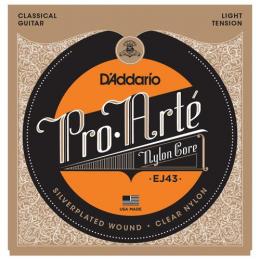
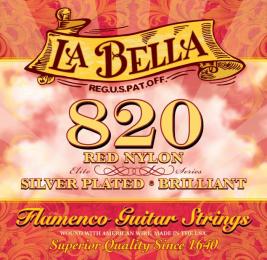
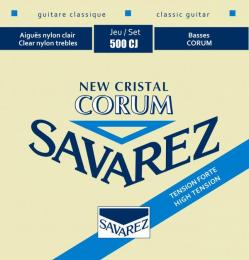
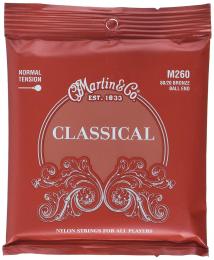
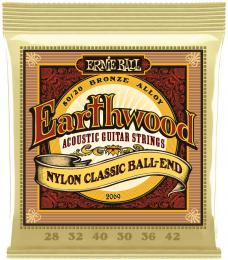

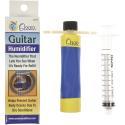
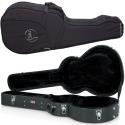
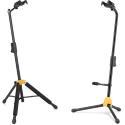
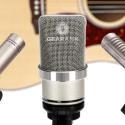

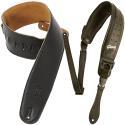
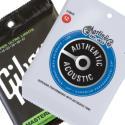
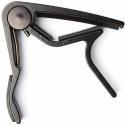


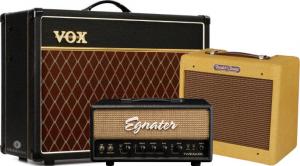
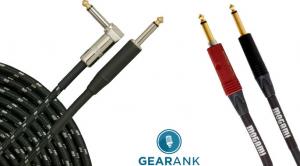

Comments
The following sets of strings
Submitted by Jason Horton on
The following sets of strings came off the recommended list when we published the August 2022 Edition:
Publication of our July 2021
Submitted by Jason Horton on
Publication of our July 2021 Edition resulted in the following sets of strings coming off the recommended list above:
Really awesome thought
Submitted by Alex (not verified) on
Really awesome thought-through review, I haven't seen a better one. I especially like the depth, the inclusion of the comparison videos and explanations of the terms for amateurs, like me.
Hi Alex,
Submitted by Raphael Pulgar on
Hi Alex,
Glad the review was helpful for you! Strings are a very critical (but often overlooked) element in guitars. Whether it's nylon string guitars or electrics, each string manufacturer and model has different qualities that aren't always described from the get-go. Taking community and expert feedback gives everyone a more accurate picture of what you get. I'm glad that you weren't alienated even though there's so much information presented!
Also, Happy New Year!
-Raphael
We have removed the D'Addario
Submitted by Jason Horton on
We have removed the D'Addario EXP45 from the recommended list above due to being discontinued.
Hello,
Submitted by Michael Brown (not verified) on
Hello,
I have a small (25.3” scale) acoustic steel string guitar. My impaired vision means I often prick myself with the end of the plain strings when changing strings. I’m thinking about trying ball end classical strings in the hope of reducing finger damage! What tension would it be best to start with - my current preference is for 10 gauge but often have to use 11s or even 12s for a better sound.
Best wishes,
Michael Brown
I have Cordoba made of
Submitted by jackaroou (not verified) on
I have Cordoba made of Cypress. Info provided by this article is essential. I don't like changing strings - it takes weeks before they settle down and stay tuned. This article covered a lot of ground.
To help my strings settle
Submitted by Jason Horton on
To help my strings settle down I over-tension by tuning them up a semi-tone or two while I'm not playing for a few days - I find this stretches the strings a little and helps them stabilize quicker.
As a result of our August
Submitted by Jason Horton on
As a result of our August 2020 update, the following string sets came off the recommended list above, but you can still read our analysis of them:
Great article! I would like
Submitted by Svante (not verified) on
Great article! I would like to find a nylon set that produces a spanish, really warm tone in the 3 lightest stings (e, b, g) wich also is avaliable with hard tension to get a good volume. I know I can bring a warmer tone with my fingers and I can also change guitar but I would like to find strings optimized for this. Do you have any suggestions?
I have found Savarez low
Submitted by Carl Quance (not verified) on
I have found Savarez low tension give the best tone, particularly for Spanish pieces like Asturias or Requerdos De La Alhambra...even for my Cedar top as well as my Spruce instrument. However, they do not hold up well at all . I play a lot, and they literally fray and come apart after 3-4 weeks.
I am returning to playing a
Submitted by Lee (not verified) on
I am returning to playing a dreadnought guitar after many years. I have not too old Martin extra light strings on it. Do folks ever use nylon strings on an acoustic guitar? I had always thought no.
I tried this once and it didn
Submitted by Jason Horton on
I tried this once and it didn't work.
Both the tension and the gauges were wrong resulting in bad intonation.
There's nothing really stopping you from trying it on your guitar, just never put steel strings on a nylon string guitar because the higher tension can warp the neck.
You are very misinformed (I
Submitted by Jason (not verified) on
You are very misinformed (I hope). Sweetwater & Guitar center are poor sources of information. Start with Strings by Mail or Guitar Salon International for authentic information and history of nylon strings and Tone.
This site made a choice to be ignorant. Don't let the corporate "delusions" of the above brokers be your excuse. You really don't know what you are talking about.
I'm not quite sure what you
Submitted by Jason Horton on
I'm not quite sure what you mean, but the businesses you mentioned were in fact all sources we used during our research.
Really usefull article!
Submitted by Don Padrone (not verified) on
Really usefull article!
Nice job guys!
Thanks!
This is a really excellent
Submitted by Wayne Walden (not verified) on
This is a really excellent presentation on nylon guitar strings. Overall, the best I've seen.
Thank you very much Wayne,
Submitted by Jason Horton on
Thank you very much Wayne, the Gearank team really appreciates that kind of support and acknowledgement.